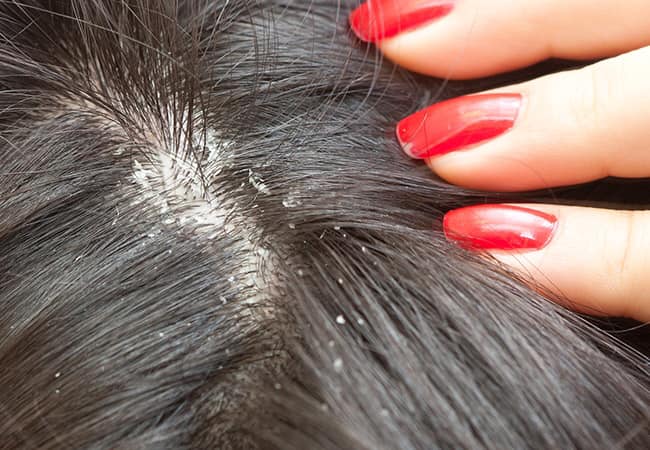
Learn about beauty and skincare with our expert guide.
Lice can be removed easily with these 3 magical homemade remedies—no chemicals required.
Learn how to treat lice naturally using simple ingredients from your kitchen.
Safe, effective, and perfect for both kids and adults dealing with stubborn lice.
Best research on Hair Lice. Must read it.
The panic sets in the moment you spot them. Your child comes home from school scratching their head incessantly, and upon closer inspection, you see those tiny, crawling creatures making themselves at home in their hair. Your heart sinks as you realize you’re dealing with infestation – one of every parent’s worst nightmares. Dousing your child’s delicate scalp with harsh chemicals makes you cringe, especially when you discover that many over-the-counter treatments contain pesticides that can cause skin irritation, respiratory issues, and other health concerns.
You’re not alone in wanting a safer, more natural approach. Millions of parents worldwide are turning this serious problem with home remedies as their first line of defense, seeking chemical-free solutions that are both effective and gentle on their family’s health. Basil is also effective for long hair. It may be used with shampoo & in hair oil. Read its proper treatment & uses.
These are tiny, wingless parasites that feed on human blood from the scalp. These persistent creatures have been plaguing humans for thousands of years, and despite common misconceptions, they have absolutely nothing to do with poor hygiene. In fact, it prefer clean hair because it’s easier for them to attach their eggs (nits) to the hair shaft.
The problem with conventional treatments is that many contain harsh chemicals like permethrin and pyrethrin, which can cause:
This is why natural treatment options have become increasingly popular among health-conscious families.
Tea tree oil is one of the most researched natural remedies for it. Its antimicrobial properties make it highly effective against both live lice and their eggs.
How to use:
Lavender oil kills it, soothes an irritated scalp, and promotes the healing of scratched areas.
Application method:
White vinegar and apple cider vinegar are excellent DIY remedies because their acidity helps dissolve the glue that holds nits to the hair shaft.
The vinegar method:
Coconut oil works by suffocating adult nits while its lauric acid content provides antimicrobial benefits.
Overnight coconut oil treatment:
Proper combing technique is crucial for fast louch removal and preventing reinfestation:
Step-by-step combing process:
Heat can effectively kill both lice and nits:
The suffocation method using mayonnaise:
This homemade lice treatment dehydrates louch:
Pregnant women and those with sensitive skin should focus on:
Understanding its lifecycle is key to complete elimination:
While natural treatment is highly effective, consult a healthcare provider if:
Home remedies offer a safe, effective alternative to chemical treatments that can be harsh on sensitive scalps, especially for children. The key to success with natural remedies for it lies in consistency, patience, and combining multiple approaches. Whether you choose the tea tree oil lice remedy, vinegar for its removal, or the coconut oil suffocation method, remember that how to remove louch eggs from hair permanently requires diligent nit removal and environmental cleaning.
The most effective approach combines several chemical-free solutions: use suffocating oils like coconut oil for overnight lice treatment, follow up with vinegar rinses to loosen nits, and maintain daily combing with a fine-tooth comb. With persistence and the right DIY remedies, you can achieve fast removal while keeping your family safe from harsh chemicals.
Remember, lice treatment without chemicals takes time and dedication, but the peace of mind knowing you’re using safe, natural methods makes it worthwhile. Stay consistent with your chosen homemade lice treatment, and you’ll successfully eliminate these unwanted visitors from your home.
While complete removal in one day is challenging, you can significantly reduce the infestation by combining coconut oil treatment (8 hours), followed by thorough vinegar rinse, and intensive nit combing. However, multiple treatments over 2-3 weeks are typically needed for permanent removal due to the lice lifecycle.
Natural nit removal involves using acidic solutions like vinegar to dissolve the glue holding eggs to hair, combined with mechanical removal using fine-tooth lice combs. Essential oils like tea tree oil also help weaken nit attachment while providing antimicrobial benefits.
Effective home remedies include: vinegar and water solution (1:1 ratio) applied for 2 hours, coconut oil overnight treatments, and daily wet combing with a lice comb. The key is loosening the nit glue and physically removing each egg.
Permanent removal requires breaking its lifecycle through consistent treatment over 2-3 weeks. Use suffocating treatments like coconut oil, follow with nit removal, clean the environment thoroughly, and repeat treatments every 3-4 days to catch newly hatched lice before they mature.
Several methods effectively remove nits: acidic solutions (vinegar), fine-tooth lice combs, fingernail scraping along the hair shaft, and softening agents like coconut oil. Heat above 130°F also kills eggs, but manual removal is still necessary.
In Pakistan’s climate, focus on locally available remedies: mustard oil mixed with neem oil, henna paste treatments, and regular oiling with coconut oil. The hot climate helps with heat treatments – use hair dryers and hot oil applications more frequently.
Complete elimination requires targeting both live lice and eggs simultaneously. Use suffocating treatments (coconut oil, mayonnaise) for live louch, acidic rinses for eggs, daily combing for physical removal, and environmental cleaning to prevent reinfestation.
Permanent nit removal combines chemical dissolution (vinegar), physical removal (combing), and heat treatment. Apply vinegar solution for 2 hours, comb section by section under bright light, and repeat every 3-4 days for 2-3 weeks to catch any missed eggs.
Permanent it elimination requires: breaking the reproduction cycle through consistent treatment, thorough environmental cleaning, treating all affected family members simultaneously, and maintaining prevention measures like regular head checks and avoiding head-to-head contact during active outbreaks.
Natural permanent removal involves: weekly tea tree oil treatments for prevention, monthly deep conditioning with coconut oil, regular use of neem-based shampoos, maintaining clean bedding and hair accessories, and immediate isolation and treatment of any new infestations.
Most Recent Post ;
No comments yet. Be the first to comment!
You must be logged in to post a comment.

Recent Comments